If you pay to advertise your brand, then you are trying to make it easier for your brand to sell products in the future.
What if your display ads ended up doing the opposite? What if it became harder to sell after you paid money to advertise?
That would be tragic, but it does happen.
Your brand can inadvertently be associated with negative imagery because it was placed beside a video, social media post, or article that is controversial, illegal, violent, or lewd.
Brand safety refers to the tool and tactics to reduce the risk that your ad would be placed somewhere bad. Brand safety also brings the added benefit that your advertising dollars don’t end up funding content that doesn’t line up with your values.
What is brand safety? Brand safety is protecting the reputation of a brand by ensuring its advertisements are not placed on unsavory websites, articles, posts, videos, or apps. Ad networks offer assurances and controls so digital marketers can guarantee brand safety.
The Interactive Advertising Bureau (IAB) has been instrumental in defining and pushing for brand safety. They have set thirteen categories of content that brands should expect their ads not to appear withing, ranging from “hate speech” to “fake news.”
Brand marketers are concerned about brand safety for five reasons:
- They don’t want to fund extremists inadvertently.
- They want to maintain their brand’s perception of quality.
- They do not want to create negative brand associations.
- They do not want to connect the brand to the negative aspects, misuse, or misconceptions related to their type of product.
- They want to maintain the organization’s reputation for being an upstanding social citizen.
Most people do not know that the placement of ads is an entirely automated process. No advertiser knows precisely where their banner ads are placed. It is easy for an advertisement to be misplaced and appear next to horrifying content.
To ensure brand safety, advertisers need to only work with trustworthy ad networks, define brand safety for their brand, and brainstorm types of content that would run counter to their brand’s values and image.
Thankfully, some of the biggest ad networks, such as Google and Facebook, offer many controls and assurances to advertisers who are worried about brand safety.
We go into all these topics in detail below.
Brand Safety Definition
Advertisers should be confident their brand is not appearing next to harmful content.
Brand safety, or sometimes called brand suitability, can be simply defined as ensuring ads will not appear anywhere that the advertiser would not be comfortable with.
Some web pages, social networks, videos, and apps can do more harm than good to a brand.
Research has proven that brands are damaged when their ads are placed amongst content with a negative theme or topic (e.g., a news article about a school shooting), or content that runs counter to the brand’s narrative (e.g., a haircare brand advertising on a blog post about animal testing.)
When people are talking about brand safety, it is usually in reference to the tools and assurances ad networks offer so that digital marketers can specify where and where not to place their ads.
Ad networks offer tiers of inventory that range from the most brand-safe content to the riskiest content. Choosing the most brand-safe inventory means those ads will only appear on publishers with a solid reputation and only benign content. This safety comes at a cost, as the demand to advertise on these websites is high.
Ad networks also offer tools to their clients when they place an ad. For example, Google lets advertisers opt-out of entire categories of content such as “Tragedy” or “Sensitive Social Issues.”
The Definition of Brand Safety from the IAB
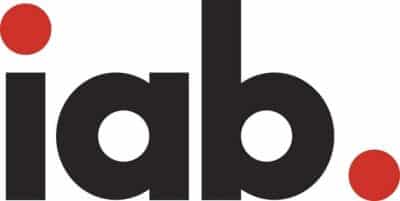
The Interactive Advertising Bureau (IAB) defines brand safety as:
“Contextual technology aimed at ensuring advertisement does not display on webpages where its appearance might negatively impact the advertiser’s brand.”
IAB “Glossary Of Terms (PDF)“
The Brand Safety Categories from the IAB
The IAB has defined thirteen unsafe digital environments. These are all themes of content where advertisers would not want their brand’s ads placed.
- Military conflict
- Obscenity
- Drugs
- Tobacco
- Adult
- Arms
- Crime
- Death/injury
- Online piracy
- Hate speech
- Terrorism
- Spam/harmful sites
- Fake news
These were referred to as the “dirty dozen” until the IAB announced that “fake news” would become the thirteenth category.
Display Ads and Brand Safety
Brand safety is particularly critical when running display advertisements. Display ads are often called banner ads. Displays ads are any type of advertisement that is graphical (not just text) that are displayed on websites, social media, apps, or videos.
Display ads mentally link the products logo to the content the advertisement is placed on because of their graphical nature. People see the logo, they see the content, and they connect the dots. The content is subconsciously associated with the brand.
But people are sensible and don’t believe the brand had anything to do with the media, right?
Well, no. A study revealed that many people believe that an advertisement means that the brand endorses the content of the publisher. They believe there is far more intentionality behind the placement of ads than there is in reality.
As marketers and technologists, it can be easy to believe that people understand the separation between an advertiser and the publisher of the content it appears on. But it is blurry to most people. Keep in mind that there are sponsorships, which are endorsements of a person, organization, or event, and they are not much different to the uninformed eye as an advertisement.
Why are brand marketers so concerned with Brand Safety?

A small business owner might open up Facebook for Business and purchase and advertisement without giving brand safety a second thought. But sophisticated advertisers and brand marketers are paranoid that an ad is going to be placed on a piece of harmful content or website that facilitates illegal activity.
Brands that are household names can spend hundreds of thousands of dollars hiring experts to ensure brand safety, paying for platforms like Integral Ad Science and donating to the IAB to lobby for brand safety laws and tools.
So why is brand safety such a big deal to these professionals?
Concern 1: Inadvertently funding extremists.
We all want our organizations to make a positive impact in the world. But a portion of a company’s ad spend can accidentally go to support extremists or activities that do not reflect our values.
If an ad is placed on a piece of content from a terrorist group, an organization with radical views, or a place that facilitates illegal activity, then the proceeds of that ad will go to those groups and fund their operations. Like any publisher, extremists and criminals place advertisements in their content to make money.
Verizon, AT&T, and Johnson & Johnson were some of the many corporations who abruptly pulled their advertising budget from YouTube once it was discovered that extremist groups were earning money from the platform. Google Adsense was paying these groups money when ads rolled amongst their propaganda videos.
Google has since offered more brand safety features and assured that extremist content will be deleted, and questionable content will not qualify for monetization.
Concern 2: Reducing the perception of the quality of the brand.
People who see an ad in a piece of content that is generally negative or contradicts the brand’s narrative feel like the brand isn’t as high quality as they thought. They are also less likely to recommend the brand to friends or family.
‘The Brand Safety Effect’ study showed that when potential customers are exposed to an ad amid unsavory content or content that puts the brand or the product in a negative like, then there is a:
- 7X decline in the perception of quality
- 0.5X decline in people’s desire to recommend the brand
The placement of the ad has nothing to do with the quality of the product or service, yet it still affects people’s perception of quality. There is nothing more core to a brand than maintaining an impression of quality; brands began because people wanted to put their names on their products because they were proud of their craftsmanship.
So it is extremely troubling that a mistake as easy to make as a misplaced ad can threaten that hard-earned perception of quality. Brand marketers are very protective of that perception of quality, so they do not want to take any risks with their brand’s safety.
Concern 3: Creating negative brand associations.
A brand association is a mental connection between a brand and a concept is a brand association. Brand associations pop to mind when a person thinks about a brand.
A brand association is created every time a customer thinks of something at the same time as thinking of the brand. Brand marketers work hard to reinforce the brand associations that help their brand sell products.
An ad placement within a piece of distasteful content makes a negative brand association, one that makes it harder to sell products in the future. Just as if we associate some restaurants with that meal that made us sick, customers may associate the brand with the gross feeling that comes with the negative content.
Some ad placements cut against the narrative the brand marketer is trying to foster, thus canceling any positive brand associations that have been earned.
For example, car brands should not want their ads placed in stories about car crashes even if they are promoting the safety features of their cars. Their brand will be associated with crashes, not safety.
Learn more about brand associations in BMB’s guide to brand associations. We share examples from Nike, Apple, and Zara.
Concern 4: Highlighting negative aspects, misuse, or misconceptions of the product.
Friend of the blog, Dr. Duane Varan (see the interview with him), has performed research assuring that advertising on news programs is good for the brand overall. But advertising on news stories about topics related to the product or industry can create brand damage.
When purchasing a digital advertisement, a marketer defines keywords of content they would like to be placed against. If someone is researching buying a car and searching “safety picks” or “fuel economy”, then car brands want their ads in front of those people.
But it is critical also to provide a list of exclusionary keywords. Otherwise, the brand could appear next to content that is in the same verticle but is negative in nature.
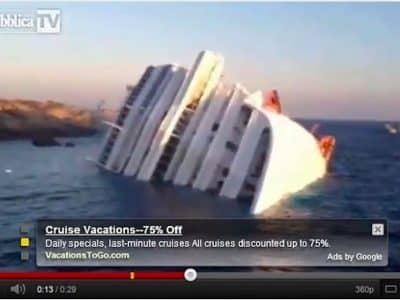
Some examples of situations in need of negative keywords are:
- A travel agency advertising against an article about a breakout of a virus on a cruise ship
- Advertising a vaping pen against a news story about lung damage from e-cigarettes.
This is called verticle averse content; advertising on any content that is related to the product category, but counters the narrative the brand is communicating.
You might think that having an ad for a new car, particularly one as safe as a BMW, within a news story about a car crash may make someone consider buying one to stay safe. But the actual effect is a net negative for the brand.
First, the study found that negative content removes people’s purchase intent. In other words: if they were thinking of buying a car, they are not anymore.
Secondly, the brand looks as if they are exploiting the news story to make themselves look better. “Seems manipulative,” said one of the participants of the study. “I’d prefer a company that doesn’t use that kind of technique.”
A key aspect of brand safety is keeping your brand away from content that could highlight it’s misuse or negative aspects.
Concern 5: Damaging a brand’s reputation as an upstanding organization.
While marketers like you and I may understand how disconnected the brand is from the publisher whose content it appears on, regular people do not. Research shows that there are consumers who believe that every ad placement is intentional. Thus, it can seem as if the brand is endorsing an extreme viewpoint if their ad is placed in a negative piece of content
The same research showed that people who saw a brand’s ad amongst a piece of negative media were:
- 4.5X more likely to believe that the brand doesn’t care about them
- 3X more likely to think that the brand is out of touch
A brand spends a long time, a lot of effort, and spends a ton of money to develop the sense that it is trustworthy and above board. That can be undone with poor ad placement.
Understanding The Placement of Display Ads
The process of connecting advertisers and publishers is made completely autonomously, sometimes with disastrous results.
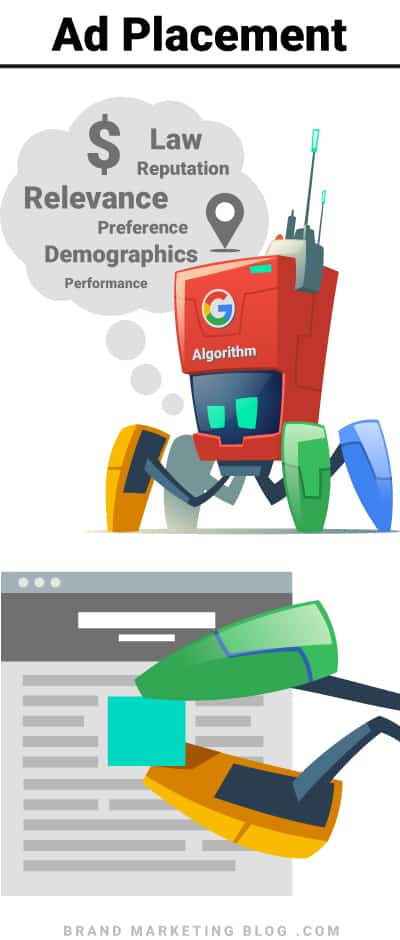
Back in the day, a company would pay a “Madison Avenue” advertising agency to develop an ad and negotiate where it went on your behalf. Your advertisement would run in a handful of places, and you knew what they were.
It was easy to maintain brand safety in this simplified environment. You may not know precisely the content of the program or article your ad was getting placed against, but a marketing coordinator could keep track.
Internet and algorithmic placement of ads make it impossible to monitor and understand everywhere ads for our brand are placed.
When you purchase an advertisement from Google Ads, Facebook for Business, or any other advertising network, there is an algorithmic process to determine where and when your brand’s ad gets shown.
When you purchase an online ad, you provide the wording and imagery and tell the advertising network what the target market is and what sort of topics would make sense for such an ad. You also say how long you want the ad to run and how much you would be willing to pay if it were shown or clicked (your bid).
Your advertisement is then filtered through an algorithm. The ad networks have servers running code that attempts to place effectively and make the network the most money.
The factors considered are:
- The amount of money the advertiser has bid
- The relevance of the ad to the keywords of the content
- Location and demographics of the viewer
- The past activity of the viewer
- The past performance of the ad
- The reputation of the advertiser
- The reputation of the publisher
- Legal compliance
The algorithm calculates these factors in less than 120 ms, or instantly, and a choice is made on which ad to display.
The algorithms connect the advertisers to content publishers. Advertising networks have an inventory of predefined spaces (empty rectangles) that the publisher has defined and wants to be filled with an ad—ads both on their sites and on millions of websites across the web. For example, Google Ads can be placed both on Google searches and blogs like mine.
Because this is an entirely automated process, there is a chance for a complete mismatch between the advertiser and the publisher.
For example, here is an ad for discount cruises being placed over a YouTube video of the disastrous sinking of the Costa Concordia. There are many hilarious examples of funny ad placements.
But it is not funny if you are the advertiser. Poorly placed ads can damage your brand’s reputation and build negative brand associations.
Thus the ad network must assure the advertiser that an ad will not be placed against content that will negatively affect the advertiser’s brand. That is brand safety.
How to Ensure Brand Safety
Okay, you understand now that brand safety is a big deal. What do you do to protect your brand?
Only Advertise Using Reputable Ad Networks
Work with ad networks that are actively protecting your brand for unsafe placements. Trust but verify.
Unfortunately, many of the factors affecting the safety of the brand are out of the control of the advertiser. There needs to be a trust that the ad network that you are spending money with is effectively distributing your ad to only safe locations on the internet.
The advertiser needs to trust that the ad network is:
- Rejecting websites where their clients would not be comfortable associating with
- Removing ad space on pieces of harmful content from otherwise reputable publishers
- Effectively programming tools for advertisers to omit their ads from whatever types of website or content they deem unsafe for their brand
- Are adequately staffed with people who ensure quality and community guidelines
Unfortunately, the only incentive ad networks have to ensure all of the above is to maintain their reputation.
Ad networks make their money based on how much advertising inventory they have. Their inventory is the number of spaces for ads multiplied by the number of times those pages or videos are viewed. The more inventory they have, then the more money they can make.
Ad networks can increase their advertising inventory by accepting websites that are not above board, or not restricting ads on salacious pieces of content. Also, bits of content that push the boundaries of acceptability have more views than conservative pieces of content. So there is a lot of money to be earned by being lax with brand safety.
The monitoring and programming required to ensure brand safety are very expensive. For example, Facebook has 35,000 people who enforce their Community Standards.
If you are advertising directly, then you need to choose your ad networks carefully. You also need to be monitoring and scrutinizing our ad placements so that you can remove an ad network if they are now putting your brand at risk.
If you are having your ads purchased by an advertising firm or ad exchange, then you need to trust and scrutinize their work. The responsibility for monitoring still rests with the brand manager.
Third parties will never care as much about brand safety ad you do, so be willing to drop partners if you believe they do not have your best interest at heart. Make sure you can cancel your contracts if you find incidents of your ads in unsafe places.
Side benefit: only working with ad networks and third parties also reduce incidents of ad fraud, when an ad network or publisher takes your money but provides no value. Many criminals defraud advertisers by faking impressions with bots or hacked code. People pay for ads, but no human being sees the ad.
Define Brand Safety for Your Brand
Advertising on brand-safe is expensive. Brands need to decide their level of risk tolerance.
Then why doesn’t every brand advertise exclusively on brand-safe content?
Well, everyone does. The costs of advertising on brand-safe content are high because all brands would prefer to advertise on such content. Risk-averse advertisers pay more for their advertising while reaching fewer people.
No brands should want their ads to appear on websites performing or facilitating illegal activity, such as torrent websites or racist blogs. You should only deal with ad networks that explicitly promise that all the publishers are above board.
But, there is an opportunity for companies to buy up cheap ads on edgy content. Brands that don’t mind appearing with content that pushes the boundaries enjoy a discount on their ads, and thus can build their brand more by reaching more people for the same amount of money.
“[What is brand-safe] all depends on what is or is not appropriate for the brand,” says the IAB. “For example, an R-rated action film might have different standards than a baby products company.”
Business owners have to determine and define their risk tolerance, or the level of brand safety that their particular brand requires. That can depend on the product, industry, corporate values, investors, and the size of the business.
Industries with a high need for brand safety:
- Baby Products
- Toys
- Banking
- Insurance and Financial Services
- Family Entertainment
- Mass Market Consumables (Cereal, Cleaning Products, etc.)
Industries with a high tolerance for edgy content:
- Alcohol
- Gambling
- R-Rated Entertainment
- Adult Media and Paraphernalia
- Mobile Gaming
- Dating Websites / Apps
Brainstorm a List of Negative Keywords
Define the keywords found in content that would be opposed to your brand and product.
If you have ever gone through the process of buying digital ads, then you know that the ad network will ask you for keywords that could be found in the content that would be most suitable for your product or service. Those are positive keywords; you want your brand more associated with these concepts.
A negative list of keywords is the opposite. These are keywords commonly found in articles or videos about topics that you don’t want your brand anywhere near. Having a list of these can be helpful to define for the ad network where you do not want your brand.
For example, a car brand would not want their brand on content that talks about:
- car crashes
- car chases
- speeding
- pedestrian fatalities
- grand theft auto
- recalls
- lawsuits
- industrial accidents
- hooning
- burnouts
- cars breaking
- global warming
- gas prices
- conflicts for oil
- and many more
Remember that a piece of content can negatively affect your brand even if your product is better in that aspect. For example, a car brand should not want to advertise on a news story about crash tests, even if their cars are known for safety. Our minds will still associate the brand with crashing no matter the brand’s reputation on safety.
Brand Safety on Ad Networks and Social Media Platforms
As we mentioned before, ad networks should be earning your trust. They should have the people and tools at hand so that you can be confident that you can keep your brand away from any content that you would not be comfortable with.
We go into the assurances and tools offered by the two of the biggest ads networks: Facebook and Google Ads.
Brand Safety with Facebook

Brands who advertise using Facebook Ads can promote across Facebook, Instagram, WhatsApp, and Facebook Audience Network.
Assurances Facebook offers advertisers:
- Community Standards that are strictly enforced on Facebook and Instagram to reduce negative user-generated content and fake accounts.
- Large Enforcement Workforce: 35,000 employees dedicated to enforcement and safety
- Instant Enforcement: Technology developed to remove content that does not meed the Community Standards instantaneously
- Transparency: Community Standards Enforcement Report is regularly published
- Selectively Choosing Publishers / Developers. Only high-quality publishers and developer are allowed into the Facebook Audience Network
- Watchdog Organizations: Facebook works with advertising industry interest groups.
Controls Facebook offers advertisers:
- Placement Opt-out: Manually opting out of content in “Manual Placements” section
- Inventory Filter: The ability to select from three tiers of publishers from the Facebook Audience Network.
- Limited Inventory (highest degree of brand safety)
- Standard Inventory
- Full Inventory (lowest degree of brand safety)
- Live Stream Opt-out: Remove your ads from live video streams where anything can happen.
- Block Lists: Manually blacklist websites and Facebook pages where you do not want your brand to appear.
More information from Facebook about their brand safety tools.
Brand Safety with Google & YouTube
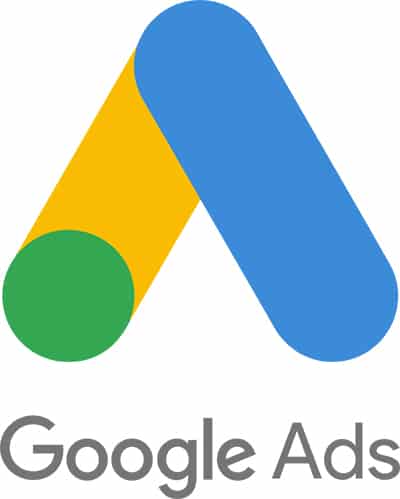
Google is one of the most significant facilitators of advertising on the internet. Not only do they place ads on their properties, like Google Search, Gmail, and YouTube, they also support a vast network of publishers.
They have recently consolidated all of their ad networks and technologies under the Google Ads brand. Most of the brand safety toolset is found in Google Display and Video 360.
Assurances Google offers advertisers:
- Third-Party Auditing: The Trustworthy Accountability Group (TAG) certifies Google against piracy, fraud, and malware.
- Supporting Industry Initiatives: Google gets behind standards set by industry groups. For example, they support the IAB Tech Lab’s Ads.txt and Better Ads Standards.
- Pushing The Publishers On Their Network: They expect publishers to comply with best practices like HTTPS and Safe Frames for advertisements.
- Developing Safer Technology: Google continually has programmers working on ways to reduce unsafe practices and fraud.
Controls Google offers advertisers:
- Digital Content Labels: the ability to opt-out of videos and web pages with different ratings and ones that have not been rated. (More info.)
- DL-G: For general audiences (highest degree of brand safety)
- DL-Y: For families
- DL-PG: For most audiences with parental guidance
- DL-T: For teen and older audiences
- DL-MA: For mature audiences (lowest degree of brand safety)
- Not yet labeled: Content that has not been labeled
- Sensitive Categories: the ability for advertisers to opt-out of any or all types of sensitive content.
- Adult: Adult or pornographic text, image, or video content.
- Derogatory: Content that may be construed as biased against individuals, groups, or organizations based on criteria such as race, religion, disability, sex, age, veteran status, sexual orientation, gender identity, or political affiliation. May also indicate a discussion of such content, for instance, in an academic or journalistic context.
- Downloads & file sharing: Content related to audio, video, or software downloads.
- Gambling: Contains content related to betting or wagering in a real-world or online setting.
- Suggestive: Adult content, as well as suggestive content that’s not explicitly pornographic. This category includes all pages categorized as “adult.”
- Violence: Content that may be considered graphically violent, gory, gruesome, or shocking, such as street fighting videos, accident photos, descriptions of torture, etc.
- Profanity: Prominent use of words considered indecent, such as curse words and sexual slang. Pages with only very occasional usage, such as news sites that might include such words in a quotation, are not included.
- Drugs: Contains content related to the recreational use of legal or illegal drugs, as well as to drug paraphernalia or cultivation.
- Alcohol: Contains content related to alcoholic beverages, alcohol brands, recipes, etc.
- Tobacco: Contains content related to tobacco and tobacco accessories, including lighters, humidors, ashtrays, etc.
- Politics: Political news and media, including discussions of social, governmental, and public policy.
- Religion: Content related to religious thought or beliefs.
- Tragedy: Content related to death, disasters, accidents, war, etc.
- Transportation accidents: Content related to motor vehicle, aviation, or other transportation accidents.
- Sensitive social issues: Issues that evoke strong, opposing views and spark debate. These include issues that are controversial in most countries and markets, as well as those that are controversial in specific countries and markets. Content with information on weapons as well.
- Shocking: Content that may be considered shocking or disturbing, such as violent news stories, stunts, or toilet humor.
- Inventory Types: Tiers of inventory on YouTube and other in-video advertising.
- Limited Inventory (highest degree of brand safety)
- Standard Inventory
- Expanded Inventory (lowest degree of brand safety)
- Exclude Embedded videos: Opt-out of appearing in YouTube videos embedded on other websites that might not be brand-safe.
- Exclude Live Stream videos: Opt-out of appearing in live streaming videos where anything can happen.
Conclusion. Keep your brand safe, but don’t let brand safety keep you from advertising.
Ads for your brand inadvertently being placed on the darker, angrier, and dirtier places on the internet should concern you. They can negatively impact your brand, reduce your brand equity, and make future sales harder to come by.
But keep in mind that the risk is far outweighed by the upside of advertising as a whole. The point of brand safety is not to stop advertising, but to continue to advertise conscientiously. You just need to take some care in the setting you opt for and the partners you choose to advertise with.
I see so many businesses not leveraging advertising at all, and that is a missed opportunity. Advertising is an essential tool for corporate brands, yet small businesses are scared of advertising. Meanwhile, digital advertising technology has made paid promotion more accessible to companies of all sizes and types.
I hope that you can now feel more confident using advertising as a tool to grow your business safely and effectively.
Sources:
https://www.iab.com/wp-content/uploads/2018/09/Ad-Quality-Checklist_8-30-18.pdf
https://www.tagtoday.net/hubfs/TAG_WhitePaper_BrandSafetyDefined.pdf?hsLang=en-us&t=1532550807217
https://ppc.land/how-google-brand-safety-works/
https://magnaglobal.com/media_trials/the-brand-safety-effect/
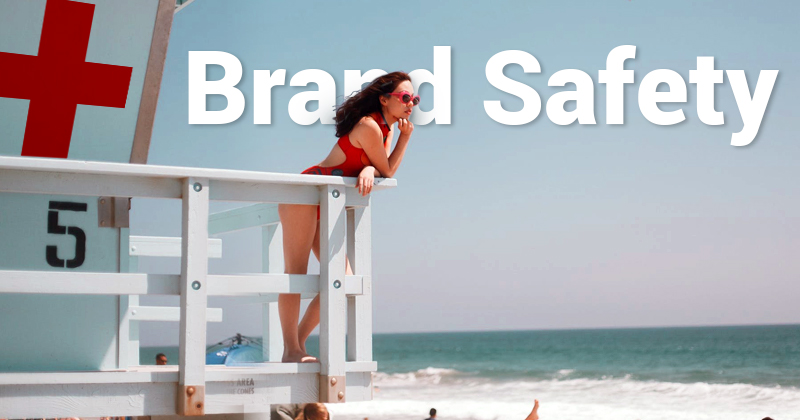
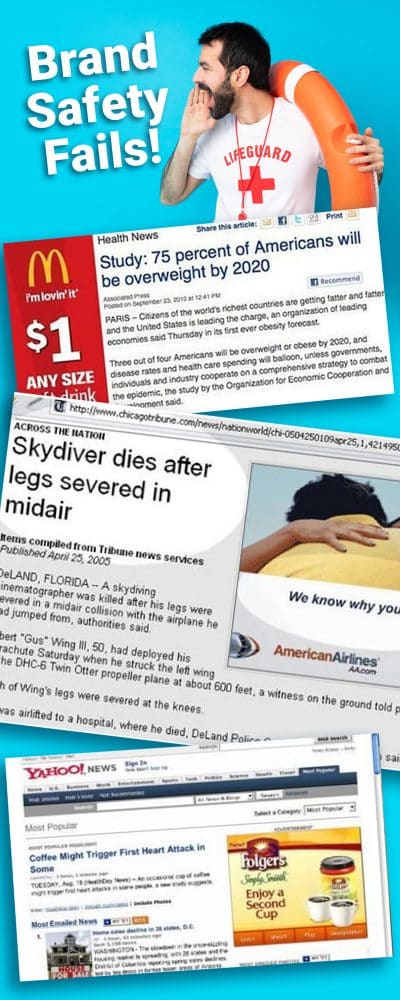
Leave a Reply